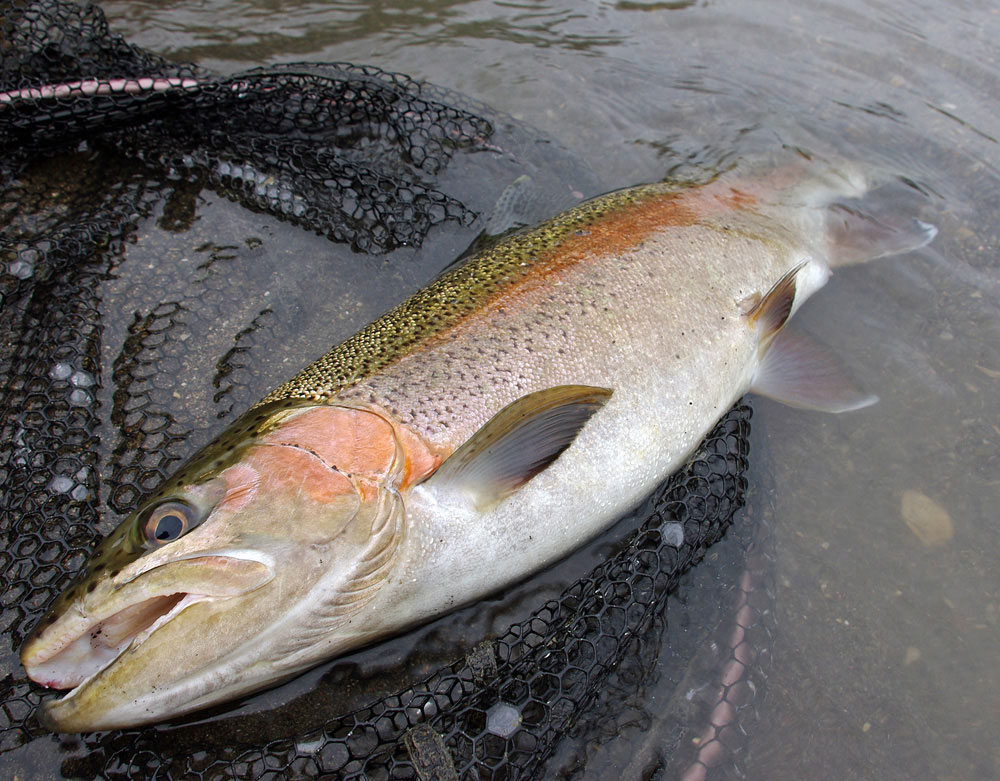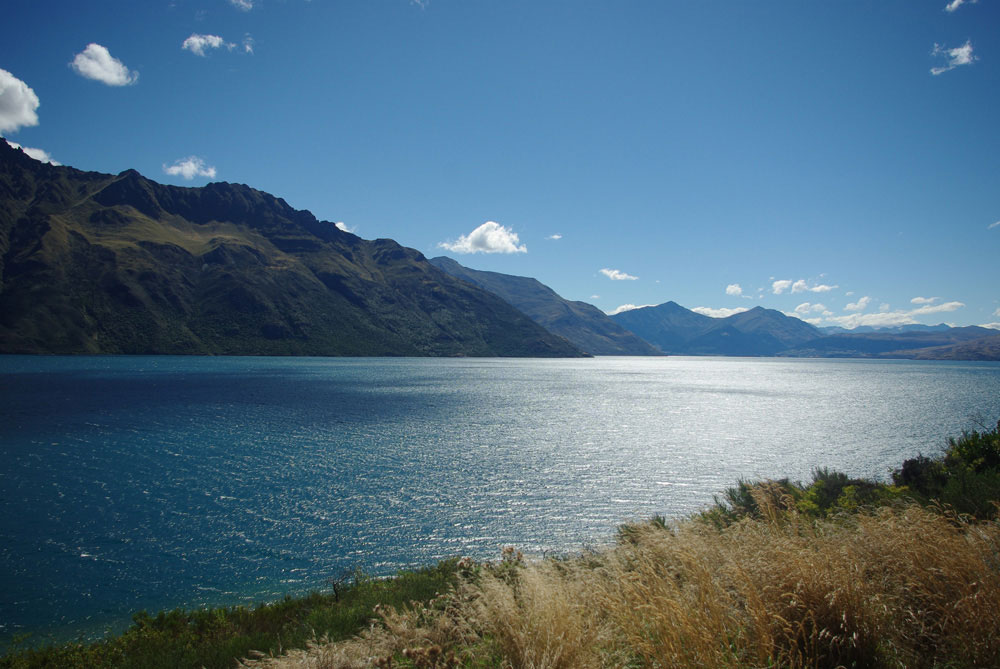Growing up in the United Kingdom, I first started fly fishing when I was about 10 years old. Having been taught the basics by my Grandads and my Dad, I was absolutely mad keen to go fly fishing. Some of my fondest memories of fly fishing, especially whilst learning, come from staying with my Grandparents in Lockerbie, Scotland. My passion for fly fishing grew each year during our annual three week visits. Fishing on a variety of local lakes, rivers and streams: I just fell in love with the sport and I never looked back.

At 18, (instead of going to University, as I didn’t know exactly what I wanted to do … and still don’t!) I decided to travel to New Zealand and Tasmania. The combination of traveling and fly fishing quickly developed into a personal passion. Constantly learning, perfecting methods, fishing new places, meeting new people and seeing different parts of the world have played a critically formative role in who I have become today.
As I write this, I find myself in a small town in the Central North Island of New Zealand. I have to say the trout fishing over here is some of the best I’ve ever experienced: not only the size and quality of the fish, but the numbers, especially on the North Island, are absolutely astonishing. Fly fishing on the North Island in my opinion is easier than the South, but you will always be presented with moments that can leave you standing there wondering ‘what on earth just happened?’ or ‘wow, look at the size of this fish!’ Most of my success has come from the Central North Island, around places like Turangi, Taupo and Taumaranui. With a great mixture of sizes, from 20cm up to and including over 65cm, rainbows and browns are there to be caught. It’s no wonder I keep coming back!

Wherever I am in the world, river fishing is where I feel most at home. It’s just such a pleasure to be presented with a new section of water: working through it logically and having the skills to be able to complete whatever little missions arise throughout the day. I always challenge myself, (as I believe it’s the only way to keep learning and improving), whether it’s working on accuracy, presentation or something as simple as wading.
I’ve spent a good deal of time fishing competitively, which presents its own unique challenges. Normally competition fly fishing is all about numbers, so you normally target smaller, easier to catch fish to maximize your score. Occasionally, competitions are scored on the total weight of a specific bag limit, but mostly it’s down to numbers of fish caught.
By contrast, pleasure fishing, for me, is either taking it easy, (like having a day off) or setting personal challenges for myself. Instead of going for the easy ‘go-to method’ and the easier fish, I push myself to go catch the harder fish. The ones which are much more wary, that require a much more tactical and stealthy approach from the moment you see them. Setting such challenges can result in heartbreak, or produce some of the best fly fishing memories you can possibly create.
Many missions accomplished and many missions failed, you’ll always have the memories. It’s incredible when you face yourself with almost an identical mission, and remember what happened last time; almost reliving the moment, right from the beginning. How do you approach the fish? Leader set-up? What kind of fly? Heavier or lighter nymph? Dry fly? Casting angle? Shadows? Disturbance? How far do you need to cast? You become so incredibly focused within seconds, it’s utterly absorbing.
Sight fishing, for me, is the absolute, ultimate test of fly fishing skill, no matter what species. It tests you, not only physically, but mentally. One of my best memories from this recent trip to New Zealand was on the South Island. I spotted a decent brown trout about 20 yards up from me. It wasn’t rising, but it was definitely feeding, as you could see it moving effortlessly to the left, then to the right, and then returning to its station. Big browns on the South Island are incredibly spooky, as they are fished for heavily, and by the end of the season they’ve seen quite a few artificial flies! If they detect any sign of your presence, you’ll see that dream catch slowly sink and sulk on the bottom or bolt off upstream: game over before you even had a chance to make the cast!

I slowly got into position, made the fly selection and, being happy with my leader set up, it was time to make the cast. With heightened senses and knowing just how special moments like this are, I took one look around to take everything in and went for it. My fly landed about 2 feet right in front of the fish. I thought I had absolutely nailed it, but the fly selection was wrong. It was too light and as I let my fly drift back towards me I knew what had happened. I needed to go heavier and with the fish still not detecting anything from what I could see, I made the change from a nymph with a 2mm bead to a 3mm bead.

Reset … recomposed … I made my second cast. This time my fly landed slightly to the right, but again 2 feet from its nose. Slowly I could see the Brown just ease over and as soon as it stopped, a slight flash of white from its mouth, a simple lift of my rod and all hell broke loose! I could hear my heart beating above the crazy acrobatic jumps, bursting runs and tricky wading. The moment came to grab my net. With a slight pull the magnet released and as I leaned forward with a fully stretched arm, the fish just slipped over the lip of my net and it was mission complete. What a moment, one that will stay with me forever and one that I will most definitely use to help me grow as an angler in future challenges.
The second time I came to New Zealand and fished, I realized just how much I had grown as an angler and just how much I still had to learn. Being from the United Kingdom, a 3lb trout on a river is a pretty special fish, especially if it’s wild. Over in New Zealand, it’s the norm! Getting used to fighting big fish and quickly, was the only way to learn. Sometimes, you can literally just set the hook and the fish is on the other side of the river within seconds, so line management is critical. Being ready for anything and everything is the way to go and I was reminded of that fact on a recent trip . . .
I knew that there were big fish in the river, as you hear stories from locals, and could only imagine what it’s like to hook one of them, let alone get one into your net for a quick grip-and-grin selfie! Having hooked up on several fish that busted off on 7lb tippet, it was clearly time to get serious and step it up. The 12lb twang goes on and I still get busted off with fish blasting off downstream, before I can even let go of the line to let them run; or with line running out of my hands so fast it’s catching around my reel, or the butt of the rod. It can be so frustrating, but what a way to learn fast!
Having fished all day, I had reached the final pool before heading home. I took a step back and thought to myself, if I were a big fish in this section, that’s where I would be. There were two big boulders with water just pushing over them: between them, there was depth and a slowness to the speed of the current. It looked like big fish territory and I knew my set up was perfect for it. Short-lining with two nymphs I just had to judge how far up I needed to cast, control that line and, if there was a big fish there . . . it was about to get a wakeup call.
Moments later I found myself in the perfect casting position. I’d worked out my wading options if it did decide to bolt off downstream. Having full confidence in the flies and the method, I made the cast and a couple of seconds later, my indicator just stopped dead and I set the hook. Not knowing if it was a brown or a rainbow, my question was soon answered when it went airborne for the first time. It was the biggest rainbow trout I had ever hooked or seen anywhere, and it promptly bolted to the opposite side of the river!
I’ll never forget it, because there was an enormous boulder there, and that’s the cover it was heading for. Having had this happen before, I knew exactly what I needed to do, which was to get all my fly line in the air. With my arms well above my head, my line cleared the boulder as the fish went around it … phew! But what happened next, I was not ready for at all. The fish came straight back over to exactly where I had hooked it. Thank god for large arbour reels! Amazingly, I managed to keep enough tension on it, and after about 5 minutes, which felt like forever, it was in my net and I couldn’t quite believe what I had just achieved. After grabbing a few pictures and releasing this epic rainbow for another fisher to catch, I just sat on the bank and took a moment to contemplate what had just happened. What an incredible experience!
If you’re thinking of planning a trip somewhere, just get those flights booked, explore, live and dream! You’ll be surprised what you can achieve. Just believe in yourself and the rest will take care of itself.
